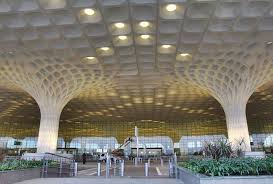India is one of the fastest growing economies in the world. We have seen a huge upsurge in Indian visitors over the past few years because it’s an increasingly popular destination for vacationers, students, expats and more. One of the main hurdles that an Indian visitor faces when traveling to India is the need for a visa. Nowadays, tourists are subjected to long stays at embassies or delays due to visa approval. Luckily there’s a solution for this!
What is an Indian Visa?
An Indian visa is a document issued by the Indian government that permits a foreign national to enter India. The visa application process involves submitting an application form and paying a fee. Foreign nationals who are not citizens of India must obtain an Indian visa in advance of their visit. Indian Visa On Arrival
The application process for an Indian visa can be lengthy, and depends on the type of visa requested. Most visas require applicants to provide documentation that proves they are eligible to travel to India. Some exceptions to this rule include diplomatic and official visas, which do not require any documentation.
Indian visas are valid for a period of six months or one year, depending on the type of visa requested. Foreign nationals who hold an Indian visa are permitted to stay in India for the duration of their visa validity. They are also allowed to work in India, unless their visa prohibits them from doing so.
To apply for an Indian visa, foreign nationals must submit an application form and pay a fee. The application form can be found online or at any government office in India. The fee varies depending on the type of visa requested, but is generally between $60 and $200 USD.
How to Apply for an Indian Visa in the US?
If you are traveling to India and want to apply for an Indian visa, the process is relatively straightforward. Here is a guide on how to apply for an Indian visa in the US:
- Visit the Indian embassy or consulate in your hometown or city of residence. If you are applying from outside of the US, visit the nearest Indian embassy or consulate. Indian Visa Application Process
- Fill out an application form and pay the applicable fees. You will need to provide some basic information such as your name, date of birth, passport number, and occupation. You will also be asked to provide your travel itinerary and other documentation that supports your planned trip to India.
- Take all of your documents to the visa office and have them photocopied for safekeeping. Your passport should be photocopied front and back, as well as any visas that you may need (if applicable). Make sure that all applications are properly completed and signed by both parties involved in visa issuance – this includes both yourself and the visa office representative.
- Submit all applications together with required documentation (including a copy of your passport) to the visa office at least 10 days in advance of your desired departure date from the US. Processing time can vary depending on volume of applications received at any given time; however, most applications are processed within two weeks of being submitted.
What are Visa Types?
There are various types of visas that an individual can apply for when arriving in India. These include a tourist visa, business visa, student visa, family-unity visa and employment visa. The process for applying for a visa may vary depending on the type of visa sought; however, all applicants must provide certain documents to prove their identity and citizenship. Additionally, applicants must also undergo a medical examination and provide documentation supporting their reasons for travel to India.
How long does an Indian Visa take to process?
The Indian visa application process can take anywhere from a few weeks to several months, depending on the nationality and category of visa requested. The vast majority of applications are submitted through the online system, e-Visa, which is available in English and many other languages.
The application fee for a non-PIO visa is US$50, while the fee for a PIO visa is US$120. Payment can be made by credit card or through certain online banking services. In addition, some banks may require a deposit of at least US$200 to process an application. Once all required documents have been submitted, the applicant will be contacted to schedule an appointment to appear at a local embassy or consulate for an interview.
Applicants should be aware that processing times may vary based on factors such as demand and availability of staff at local embassies and consulates. Generally speaking, however, most applications will be processed within six weeks.
What happens if your Indian Visa gets denied?
If you have an Indian visa on arrival, your visa will be automatically cancelled as soon as you enter the United States. If you applied for a visa through an Indian consulate or embassy, your application may be delayed and there is no guarantee that it will be approved. If your visa is denied, you may need to apply for a new visa through an Indian consulate or embassy.
Conclusion
Hopefully, this article has helped you understand the Indian visa on arrival process and given you some tips for applying. Keep in mind that the application process can vary depending on your nationality, so be sure to check with your embassy or consulate for specific instructions. As always, we here at VisaHQ would love to help you with any questions or concerns that you may have. Thank you for reading!

